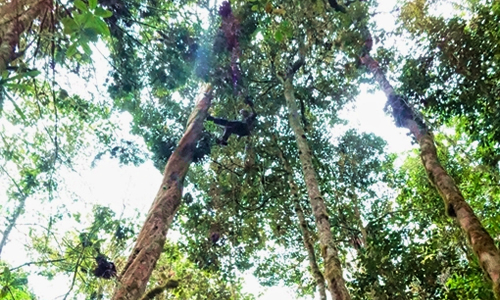2022 Venezuela
Between March and April of 2022, a team of 8 people led by Luis Gamez and Roxibel Pelayo conducted a full recensus of six permanent plots located in the San Eusebio Experimental Forest station, a 370-ha property of Universidad de Los Andes. This is a fragment of mature Andean cloud forests that once covered a much larger area of the Venezuelan Andean Mountain range. This set of plots was established in 1969 and was continuously measured up to 2016. Due to the severe economic and institutional crisis in Venezuela it has become very hard to maintain this work on a regular basis, but thanks to the support of Rainfor and the Red de Bosques Andinos initiative we were able to continue the monitoring of one of the areas with the longest records across the neotropics.
Because of the extended period without measurements between 2016 and 2022, the team focused on a careful retagging and taxonomic identification of all trees greater than 10 cm following our RAINFOR standard protocol. Approximately 63 different species of trees were registered from which 22 are included in the Red book of the Venezuelan flora, reflecting the importance of this area for the conservation of biological diversity. One of these species is Retrophyllum rospigliosii, one of the very few native species of conifer trees that can be found in the neotropics with many large trees that can reach up to 45 meters in height. The team is now working on the analysis of the data and preparing for uploading into the forestplots.net database. We hope the team can visit other plots of the Venezuelan network soon and keep this project alive and sustain the monitoring of Venezuelan forests.
Emilio Vilanova, Wildlife Conservation Society
For additional information see Collapse of Venezuelan science threatens the world’s most sustained monitoring of tropical forests, 2020 and Emilio Vilanova’s blog


